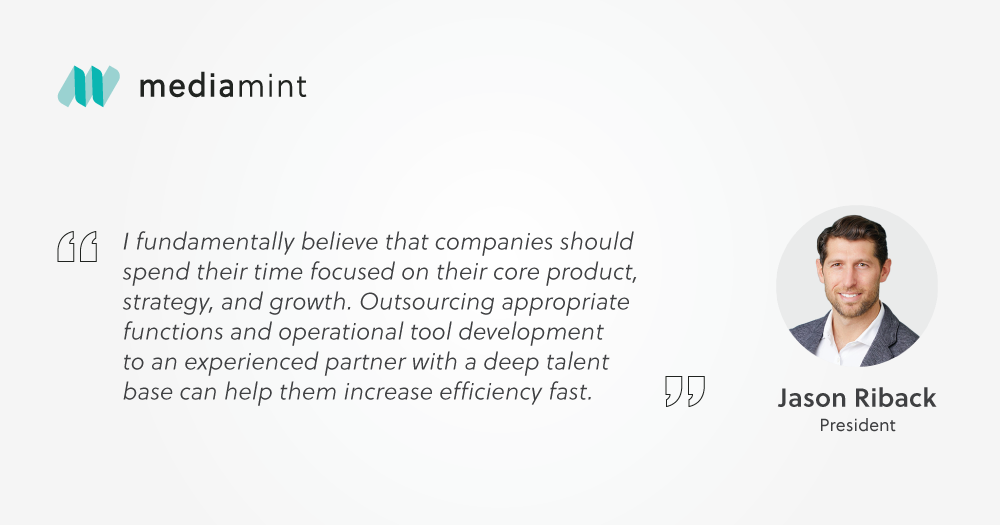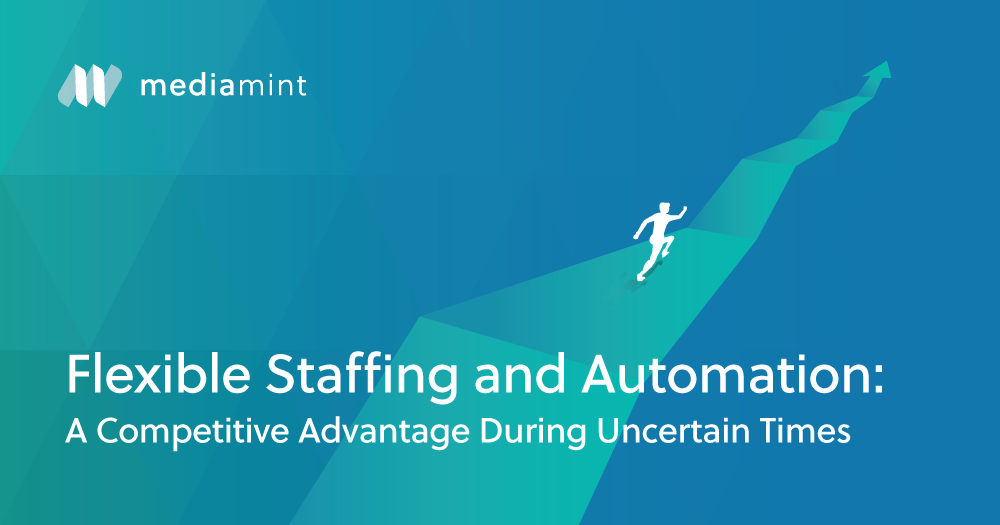Economic downturns that disrupt businesses are not uncommon. Taking advantage of these downturns to strengthen your business can help accelerate growth and increase market share during the recovery. One way to accomplish this is to incorporate automation and flexible staffing into your plans. With the right partner and the implementation of the right technology, you can ensure your business and operation are agile and ready to respond to both the next crisis and the next growth opportunity.
That’s why an overwhelming number of companies are using this time to double down on process improvements. This year, on its 10th anniversary, MediaMint built out its development group, called TensorGo, to focus on supporting technical integration projects, building customized applications, dashboards, and reporting systems that all drive incremental efficiency and scalability across critical business functions for our clients.
We are driving integrations of JIRA, Salesforce, Zendesk, and other platforms. We are examining process flow maps across client business functions to identify continuous improvement opportunities. We are cleaning up and building out CRMs and dashboards to provide better performance visibility. These are activities that were often deprioritized because people didn’t need to disrupt the flow during good times. But it turns out almost everybody sees the value of fine-tuning their business and increasing their flexibility and agility to adapt to change.
MediaMint has emerged over the past 10 years as a truly engaged operations strategy partner who can not only handle operations tasks for you but who also has the insights, experience, and ability to help clients streamline critical operating practices. By marrying automation tools and flows with skilled media and technology operations resources, MediaMint has helped many clients reduce process times and improve quality, resulting in efficiency gains of 60-70%.
That is what leveraging a strategic outsourcing partner can help you achieve. Along with harnessing the collective knowledge of an experienced team, a partner has the capability to quickly customize teams and flexibly ramp up or down the broad base of talent required to support each initiative. Understanding your challenge and then applying the right technical solutions will reduce the time and headcount required to operate and scale your business, which will save your company money and improve the bottom line.

How Do I Know If Automation Is Right for Me?
There are a few questions you’ll want to ask yourself before you think about implementing automation to drive operational excellence.
- What is the frequency of this process?
- How much time does this process take?
- Will the process itself change frequently?
- How big is the risk of automation failure due to a process change?
- Will the overall value to my business from automating be worth more than the cost?
“If the process time and frequency are high, then automation is immediately going to lower costs through speed and consistent quality. However, if the process is constantly changing or the end product is highly customized, an over-engineered, automated system may suffer from frequent breakdowns or potentially more impactful quality errors,” says Riback. “While human variability and errors exist, the ability to roll out a change in a manual process quickly and maintain consistent quality can be more cost-effective and still be an operational advantage.”
When Not to Automate
Automation is very efficient for standard reports and standard output, but less so for cases when you have unique data requests or customized data sets. Sometimes the requests that come through don’t have enough detail, and you will need team members to communicate with the client to better understand exactly what they’re looking for and why. Building a tool to solve for each unique situation will take a lot longer and cost substantially more than just having the right talent in place.
“By all means, if you can solve 80% of your inbound requests through a set of customized automated reports, go for it,” says Riback. “However, don’t ignore the fact that that solution doesn’t solve 100% of your problem. For the other 20%, you’ll want to have a white-glove managed service that can handle those custom requests.”


Recent Comments